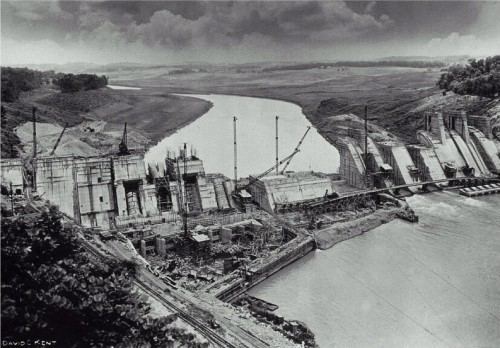Primary outflows New River Max. length 21.67 mi (34.87 km) Area 18.21 km² Length 34 km Inflow source New River | Primary inflows Surface area 4,472 acres (1,810 ha) Surface elevation 566 m Outflow location New River | |
 | ||
Similar New River, Blue Ridge Mountains, Claytor Dam, Great Smoky Mountains, Great Smoky Mountain | ||
Virginia bass n claytor lake va
Claytor Lake in Pulaski County, Virginia, is an approx. 4,500 acre (18 km²), 21 mile (34 km) long reservoir on the New River created for a hydroelectric project of Appalachian Power Company. It is named for W. Graham Claytor, Sr. (1886–1971) of Roanoke, Virginia, a vice president of Appalachian Power who had supervised construction of the Claytor Dam which created the lake.
Contents
- Virginia bass n claytor lake va
- Map of Claytor Lake Virginia USA
- Claytor lake state park virginia
- History
- The Friends of Claytor Lake
- Rail trail
- Recreational activities
- References
Map of Claytor Lake, Virginia, USA
Three miles of Claytor Lake's shoreline is bordered by Claytor Lake State Park, operated by the Commonwealth of Virginia.
Claytor lake state park virginia
History
In 1910, the New River Power Company began acquiring land on the New River, south of Radford, Virginia, for the impoundment for several hydroelectric dam projects. By 1925, these projects had been combined, and control of the project passed to Appalachian Power Company. The construction of Development No. 6, later called the Claytor Dam, began in 1937 and was completed in 1939. By the Spring of 1940, the New River was fully impounded, and Claytor Lake was formed.
Claytor Dam is a gravity concrete dam, impounding an estimated storage capacity of 225,000 acre-feet. The plant is the largest of the power company's 12 hydroelectric plants, with a total generating capacity of 75 megawatts.
In early 1944, the people of the surrounding area expressed an interest in the establishment of a state park on the new lake. The idea continued to grow, and in 1946 private citizens and businesses from Pulaski, Radford and Blacksburg raised the money needed to purchase 437 acres (1.77 km2) from Appalachian Power. This land was given to the state to be developed as Claytor Lake State Park.
The Friends of Claytor Lake
The Friends of Claytor Lake (www.focl.org) is a 501(c)(3) non-profit organization that is dedicated to conserving and protecting the quality, sustainability and tranquility of the environment of Claytor Lake for all. They operate a clean up crew which is responsible for removal of debris from Claytor Lake averaging 6,000 tons of debris and trash each year. They are instrumental in boater safety programs, water quality studies, hydrilla control, and other programs enhancing the experience for lake goers. Donations can be made to The Friends of Claytor Lake and are tax deductible.
Rail trail
Hiwassee Trestle, on the New River Trail, a former railroad line which is now a rail trail, crosses Claytor Lake, and is part of the linear New River Trail State Park. The bridge was built in 1931 by Virginia Bridge and Iron Co. of Roanoke, a subsidiary of the Norfolk and Western Railway. The trestle is 951 ft (290 m) long.
Recreational activities
Popular activities at Claytor Lake include powerboating, sailing and various watersports.
Fishing has also become a major attraction at Claytor Lake. The most plentiful fish in the lake are bluegill, a form of sunfish. Most commonly they are in the 6" to 8" (15–20 cm) range and weigh less than a pound. Catfish are also popular in Claytor Lake, some of them getting quite large (well over 50 lb (22 kg)). The main sporting varieties are largemouth bass, smallmouth bass and striped bass. Large and small mouth bass fishing tournaments are a regular seasonal event at Claytor Lake with weights of 15 to 20 lb (7 to 9 kg) per fisherman being an average winning catch. All tournament fishing is catch and release and most is done by local clubs. Striped bass fishing occurs year-round with various techniques. The average "striper" (as they are commonly known) is about 8 lb (4 kg) but catches close to 30 lb (14 kg) have been reported.
Several high cliffs of shale rock ring the lake shoreline. This material is generally loose and unstable, and therefore climbing is not permitted.
The Blue Ridge Mountains Council of the Boy Scouts of America operates the Claytor Lake Aquatics Base on the shore of the lake. It offers sailing, rowing, and other watersports such as wakeboarding to the Boy Scouts who spend a week there during the summer. It also offers a program to earn a PADI scuba diving certification over the course of the week.
